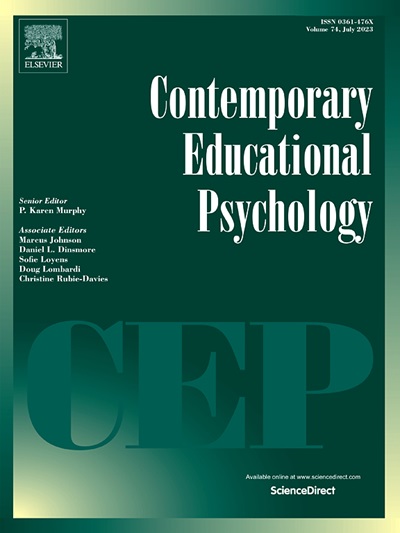Teaching with worked examples – Why the selection of problems for exemplification is critical
IF 3.9
1区 心理学
Q1 PSYCHOLOGY, EDUCATIONAL
引用次数: 0
Abstract
Educational research has explored many aspects of the design of worked examples for teaching problem-solving skills but has yet to consider the influence of the problem itself that is chosen for exemplification. It is argued that the selection of problems to exemplify influences (meta-)comprehension since some problems lead to worked-out solutions that could be more or less ambiguous. Contrasting theories and findings are discussed which suggest both negative as well as positive effects of ambiguous examples on learning, at least when students are sufficiently supported to deal with that ambiguity. Study 1 (50 university students) confirmed that the selection of problems to exemplify impacts the ambiguity of examples. Studies 2–4 (90 university students; 100 university students; 142 high school students) showed that the groups receiving the problem that led to the more ambiguous example performed worse on the learning test, more often exhibited misconceptions, and overestimated their test performance. These effects were mostly large, consistent across learning topics (designating a factorial design and calculating the h-index), and even held on when learners received instructional support in the form of verbal explanations, which could have helped to disentangle the ambiguity. Amongst others, the results emphasize the need to pay more attention to the selection of problems for exemplification and consider an example’s ambiguity as an important feature for its effectiveness. In addition, they illustrate the preference of learners to follow examples over explanations, how misconceptions may arise, and the importance of guiding learners in early skill-acquisition phases.
求助全文
约1分钟内获得全文
求助全文
来源期刊

Contemporary Educational Psychology
PSYCHOLOGY, EDUCATIONAL-
CiteScore
16.50
自引率
3.90%
发文量
74
期刊介绍:
Contemporary Educational Psychology is a scholarly journal that publishes empirical research from various parts of the world. The research aims to substantially advance, extend, or re-envision the ongoing discourse in educational psychology research and practice. To be considered for publication, manuscripts must be well-grounded in a comprehensive theoretical and empirical framework. This framework should raise critical and timely questions that educational psychology currently faces. Additionally, the questions asked should be closely related to the chosen methodological approach, and the authors should provide actionable implications for education research and practice. The journal seeks to publish manuscripts that offer cutting-edge theoretical and methodological perspectives on critical and timely education questions.
The journal is abstracted and indexed in various databases, including Contents Pages in Education, Australian Educational Index, Current Contents, EBSCOhost, Education Index, ERA, PsycINFO, Sociology of Education Abstracts, PubMed/Medline, BIOSIS Previews, and others.
 求助内容:
求助内容: 应助结果提醒方式:
应助结果提醒方式:


